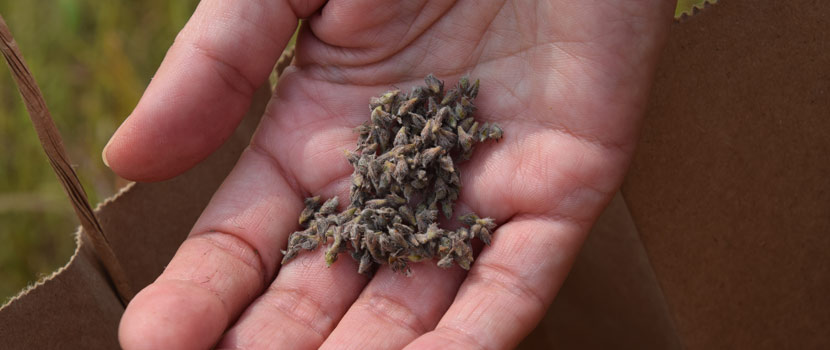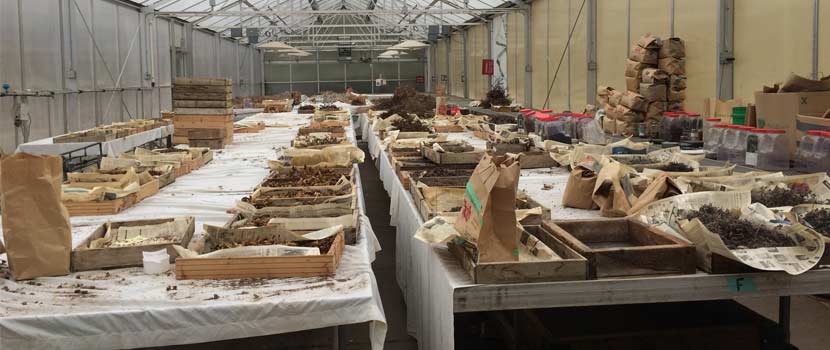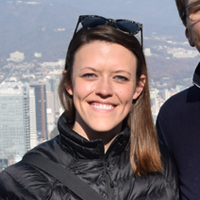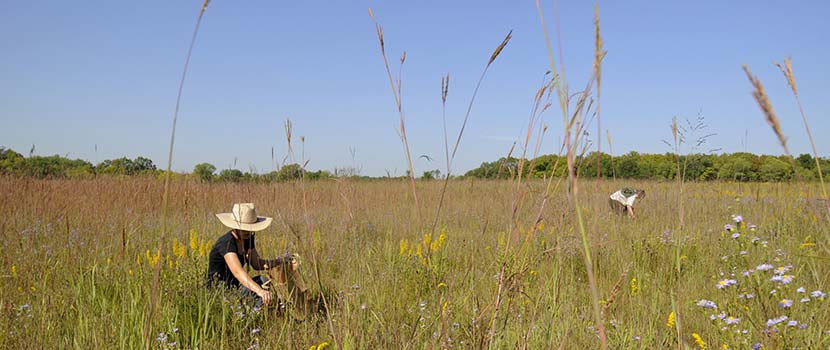
What Happens To Collected Prairie Seeds?
By: Erin Korsmo
August 22, 2018
Category: Resource Management
Earlier this week, we posted about prairie seed collection and the role it plays in restoring native prairies. If you’ve participated in a seed collection event – or even if you haven’t – you may have wondered what exactly happens to the seeds after they’re collected from the prairie.
Getting the seeds back out onto the prairie is not as simple as you might think. Here's what happens between seed collection and seed planting.
1. Volunteers collect seeds from the prairies under the supervision of Three Rivers staff.

2. Staff take the seeds to the Park District nursery in Crow-Hassan Park Reserve and lay them out to dry.

3. Seeds are sorted by species and cleaned. Cleaning methods depend on the seed. Stems must be removed. Some seeds are brushed and extracted from the flower head.
4. Seeds are weighed, bagged and logged.
5. Staff decide what mixture of seeds should be planted in which prairie unit. This is based on which plants are thriving and which need some help.
6. The seeds are put into cold storage. This allows them to go through the stratification process that would occur naturally in the winter. It also keeps them safe from hungry rodents.
7. In the spring, the seeds are mixed by hand using shovels.
8. The seed mixtures are rebagged and labeled for the prairie unit where they will be planted. Each Three Rivers prairie is divided into several units.
9. The seeds are sown after the prairies have been burned by staff. The seeds are combined with sand and put into a sander on the back of a truck. On a lightly rainy day, staff "sand" the prairie by driving over it in a random fashion. This keeps the plants from growing in rows. Mixing the seeds with sand and sowing on a rainy day helps anchor the seeds to the soil so they don't float away.

10. Some rare plants are seeded by hand.
11. The seeds germinate and grow throughout the season.

Join an Upcoming Seed Collecting Event
Want to be part of the prairie restoration process? Learn more about how to join a seed collecting event.
About the Author

Erin Korsmo is the Web Coordinator at Three Rivers Park District. Her background is in journalism and content strategy. Erin has a longstanding passion for the outdoors. As a child, she went camping every summer and volunteered to count loons for the DNR with her family. Erin is a Minnesota Master Naturalist in the deciduous forest and prairie biomes. Outside of work, she enjoys hiking, kayaking, identifying and photographing plants and wildlife, crafting, and spending time with her husband and cat.
Related Blog Posts
What's in a Seed? Why Prairie Seed Collection Matters
By: Erin Korsmo
Prairies are the most threatened habitat in Minnesota. Some species that depend on prairies are now on endangered and threatened species lists. Read on to learn about the important role volunteer seed collectors play in saving the prairies and the creatures that inhabit them.
What Is Environmental Stewardship to You?
By: Laura Jarriel Andrea Breitung
Learn what the Three Rivers blog is about and start to ask yourself what environmental stewardship means to you.
Pollinators: The Great Monarch Migration
By: Elaine Tucker
Have you ever wondered what a monarch tag is or why we tag monarch butterflies? Read on to discover more about these beautiful insects and their incredible 2,000-mile migration.



